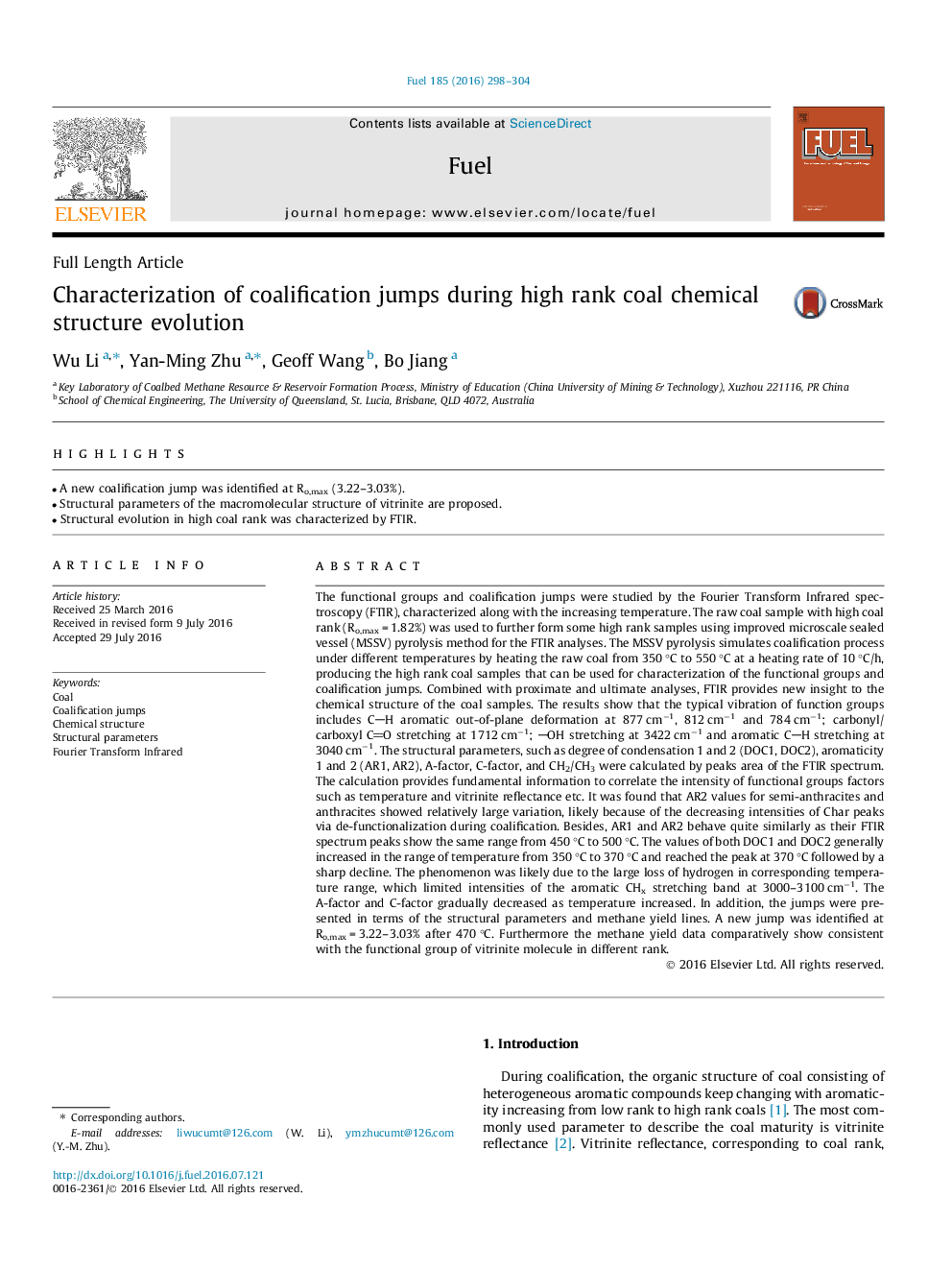| کد مقاله | کد نشریه | سال انتشار | مقاله انگلیسی | نسخه تمام متن |
|---|---|---|---|---|
| 6632761 | 461088 | 2016 | 7 صفحه PDF | دانلود رایگان |
عنوان انگلیسی مقاله ISI
Characterization of coalification jumps during high rank coal chemical structure evolution
ترجمه فارسی عنوان
مشخصه تکاملی زدایی در طول تکامل ساختار شیمیایی زغال سنگ بالا
دانلود مقاله + سفارش ترجمه
دانلود مقاله ISI انگلیسی
رایگان برای ایرانیان
کلمات کلیدی
زغال سنگ، جهش کوانتومی، ساختار شیمیایی، پارامترهای ساختاری تبدیل فوریه مادون قرمز،
موضوعات مرتبط
مهندسی و علوم پایه
مهندسی شیمی
مهندسی شیمی (عمومی)
چکیده انگلیسی
The functional groups and coalification jumps were studied by the Fourier Transform Infrared spectroscopy (FTIR), characterized along with the increasing temperature. The raw coal sample with high coal rank (Ro,max = 1.82%) was used to further form some high rank samples using improved microscale sealed vessel (MSSV) pyrolysis method for the FTIR analyses. The MSSV pyrolysis simulates coalification process under different temperatures by heating the raw coal from 350 °C to 550 °C at a heating rate of 10 °C/h, producing the high rank coal samples that can be used for characterization of the functional groups and coalification jumps. Combined with proximate and ultimate analyses, FTIR provides new insight to the chemical structure of the coal samples. The results show that the typical vibration of function groups includes CH aromatic out-of-plane deformation at 877 cmâ1, 812 cmâ1 and 784 cmâ1; carbonyl/carboxyl CO stretching at 1712 cmâ1; OH stretching at 3422 cmâ1 and aromatic CH stretching at 3040 cmâ1. The structural parameters, such as degree of condensation 1 and 2 (DOC1, DOC2), aromaticity 1 and 2 (AR1, AR2), A-factor, C-factor, and CH2/CH3 were calculated by peaks area of the FTIR spectrum. The calculation provides fundamental information to correlate the intensity of functional groups factors such as temperature and vitrinite reflectance etc. It was found that AR2 values for semi-anthracites and anthracites showed relatively large variation, likely because of the decreasing intensities of Char peaks via de-functionalization during coalification. Besides, AR1 and AR2 behave quite similarly as their FTIR spectrum peaks show the same range from 450 °C to 500 °C. The values of both DOC1 and DOC2 generally increased in the range of temperature from 350 °C to 370 °C and reached the peak at 370 °C followed by a sharp decline. The phenomenon was likely due to the large loss of hydrogen in corresponding temperature range, which limited intensities of the aromatic CHx stretching band at 3000-3100 cmâ1. The A-factor and C-factor gradually decreased as temperature increased. In addition, the jumps were presented in terms of the structural parameters and methane yield lines. A new jump was identified at Ro,max = 3.22-3.03% after 470 °C. Furthermore the methane yield data comparatively show consistent with the functional group of vitrinite molecule in different rank.
ناشر
Database: Elsevier - ScienceDirect (ساینس دایرکت)
Journal: Fuel - Volume 185, 1 December 2016, Pages 298-304
Journal: Fuel - Volume 185, 1 December 2016, Pages 298-304
نویسندگان
Wu Li, Yan-Ming Zhu, Geoff Wang, Bo Jiang,
